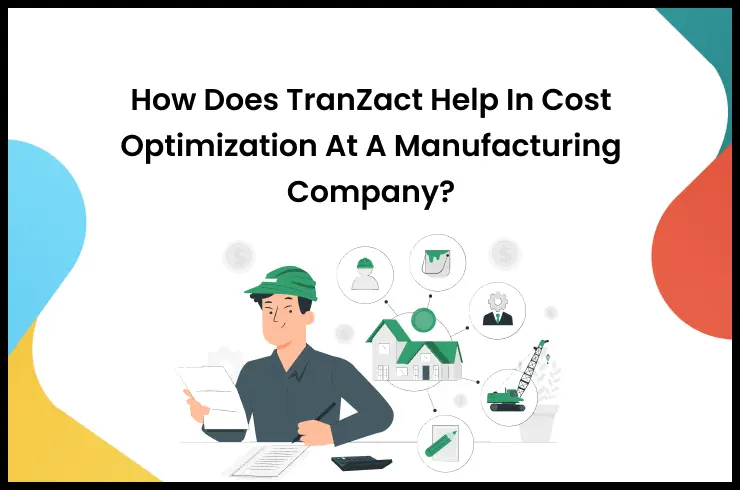Capital goods are durable assets that play a crucial role in business operations and have a longer lifespan. No business can operate effectively without investing in capital goods. Capital goods encompass the buildings, tools, and equipment necessary for producing goods or providing services. To accurately assess the cost of conducting business over time, capital assets receive special accounting treatment, considering their extended usefulness and integral role in company operations.
Stay tuned with us to know more about the types of capital goods, the difference between consumer goods and capital goods, and factors affecting investment in capital goods. Let's begin!
What Are Capital Goods?
The term "capital goods" is used to describe the intangible, long-term assets that a company invests in to facilitate the manufacturing of end products. These items might be difficult to sell for a profit. They don't wear out soon and are long-lasting.
Tools, machines, structures, and electronic devices are all capital goods examples. In macroeconomics, capital goods are often employed to quantify capital creation and assess manufacturing potential.
Capital goods are essential assets that enhance productivity. Companies often invest in plants, property, and equipment as their primary fixed assets. Acquiring capital goods requires a significant portion of the producer's budget, which is why it is categorized as capital expenditure in accounting. These investments are crucial for improving output and overall operational efficiency.
Capital assets that are not used up in one year are written off in an organization's financial statements using various depreciation techniques.
Capital Goods vs Consumer Goods
Capital goods and consumer goods have distinct classifications based on their purpose. Consumer goods are finished goods purchased by customers for their personal use, while capital goods are used by manufacturers in the production of other goods.
An example of this distinction is a peach. When a consumer purchases a peach for their consumption, it is considered a consumer good. However, if a business invests in peach to extract its juice for sale, it becomes a capital good. The intended use determines the categorization.
It's important to note that businesses primarily deal with the sale of consumables, not fixed assets. Unlike consumer goods, investments in capital goods do not yield immediate returns. Businesses often utilize loans, investments, or savings to acquire expensive assets like vehicles, buildings, machinery, and equipment.
Companies involved in production rely on capital equipment such as infrastructure, machinery, and vehicles. These assets are not related to the financial investment in a business for potential returns.
The addition of durable goods significantly enhances a company's production capabilities, enabling efficient and faster mass production.
Consumer goods, on the other hand, are purchased solely for personal consumption. They can be categorized as durable (lasting more than three years), non-durable (lasting fewer than three years), or services (e.g., haircuts).
Products like cheese and rings are convenience goods, while furniture and life insurance fall under specialty goods and unsought goods categories.
Understanding this distinction between consumption goods and capital goods, we can further explore the various categories of fixed assets.
Importance of Capital Goods
Capital goods are crucial to a country's economy for a number of reasons. Let's check out a few of them.
It boosts efficiency
Manual production is a laborious and lengthy procedure and causes decreased output and increased expenses. Businesses may boost output by investing in machinery and other forms of capital equipment. This makes it possible to produce more items in less time and at a cheaper cost, enabling businesses to increase output and income.
Highly worthy
A company's investment in capital goods might pay off handsomely if such purchases are well-made. Investing in the right machinery allows for rapid, high-volume production of high-quality items, which in turn increases sales and profitability. Increased interest from potential investors means more money and other resources for your company to expand more.
Provides a solid gauge of the state of the economy
Capital products are often regarded as a reliable economic barometer. When businesses invest more money in buying machinery and other forms of capital goods, it usually means they plan to crank out greater output. When economic conditions improve or when increased sales are expected, only then will the production of products and services grow.
Thus, capital expenditures are a useful indication of the future course of economic growth.
How Do Capital Goods Work?
The question of how investment in capital goods actually works to stimulate economic expansion is an important one.
To answer this let's understand how fixed or variable capital are different from each other. Long-lasting investments that do not deplete rapidly throughout production are known as "fixed capital" or "fixed assets." All structures and machines are included in this category.
In contrast, capital that is used during production is known as variable capital and must be regularly replaced. Materials and energy are included in this category.
When selecting how much to spend on equipment, organizations weigh a variety of criteria. Among these are the investment's projected return, the cost of borrowing, and the associated risk.
Whether the company can fund the investment internally or will need to seek outside funding is another factor to be considered.
Types of Capital Goods
Companies invest in capital goods because they are crucial to the production of final goods and services for customers. A majority of these items are immovable structures, machines, vehicles, and other tools.
Types of capital goods refer to the different categories or classifications of assets used by businesses to enhance their production capabilities. These can include machinery, equipment, vehicles, buildings, and infrastructure. Also, structures and transportation assets are all capital goods examples.
The production of consumer products and services relies on capital goods. It would be challenging to generate the things we need and want without capital goods. Because of their longevity and reusability, capital goods are put to work in the manufacturing of other products.
Capital Goods Example
In order to create items that may be sold to consumers, any business has to invest in fixed assets. Numerous instances of this may be seen every day, especially if you run a business of any size.
Consider the service industry as an illustration. There are essential pieces of hairstyling gear that every salon should have. Salon equipment includes many different tools, such as various shears, curling irons, razors, and blow dryers. A hairstylist who is prepared for a customer with the aid of the right tools will be successful.
Let's say you're considering starting a dairy farm. You'll need specialized machinery and tools to turn milk into cheese, cream, and butter. Equipment for a dairy farm includes milk storage tanks, cream separators for creating low-fat milk and cream, and butter churns for churning the butter.
In conclusion, a company cannot survive without capital goods since they are essential to the production of finished products. Capital goods include anything from machinery and buildings to tools and equipment.
Factors Affecting Investment in Capital Goods
When assessing whether or not to invest in capital goods, firms must weigh a number of criteria. The following are examples of some of the most important considerations:
The state of the economy
When deciding whether or not to invest in capital goods, enterprises should take the state of the economy into account. Putting money into capital goods might not be the greatest idea if the economy as a whole is struggling.
Funding availability
Investment in capital goods requires that enterprises have access to sufficient capital. They may not be able to invest if they don't have the money set up.
The ROI that may be achieved
Before opting to purchase capital equipment, organizations should calculate their expected return on investment. Investment in capital goods may not be warranted if the expected return is poor.
The risks involved
Investment in capital goods is not without its hazards, and firms need to be aware of them. If the potential downsides are too severe, the project might not be worthwhile.
The impact on cash flow
Organizations should think about how buying capital equipment will affect their cash flow. It might not be worthwhile to put money into it if it does not favor the over cash flow management.
How Capital Goods Affect the Economy
Capital assets play a crucial part in every economy. They matter because of the long-term impact they can have on the economy's capacity for production. Many developed nations, enthusiastically adopt and manufacture new capital assets such as machinery. This leads to technological advancements in production methods, new products, and improved quality, which contribute to job creation, income generation, and overall economic progress.
Economic expansion relies on the coordinated efforts of many diverse fields. The capital assets sector coordinates the efforts of various other industries to produce capital goods, thereby enabling cross-sectoral development. Capital goods, including infrastructure like roads, bridges, and power plants, provide the foundation for economic activities.
They facilitate transportation, communication, and access to resources, fostering trade and investment. On the other hand, tax revenue boosts the government treasury and stimulates business activity. Moreover, the manufacturing industry in any economy cannot function without capital goods.
Capital Goods Play a Vital Role in a Company's Success and Growth!
Investing in high-quality capital goods is crucial for both individual firms and the broader national economy. They play a key role in contributing to the overall economic development and profitability.
The availability of capital goods directly influences firms' ability to produce goods, giving an advantage to those who possess them. Capital goods with advanced technology and precision capabilities contribute to improved product quality and consistency. This enhances customer satisfaction, strengthens brand reputation, and generates repeat business!
FAQs on Capital Goods
1. What are the best ways to invest in capital goods?
Each investor has a unique set of circumstances and priorities, and this affects how they should use their resources to purchase capital goods. Researching the firms and industries involved in the manufacturing of capital goods and keeping up to speed on economic and political changes that might affect the demand for these items are two things to keep in mind when making investment decisions in this sector. In addition, it might be useful to consult a financial advisor for advice on how to best diversify your investment portfolio across asset classes and industries.
2. What are the benefits of investing in capital goods?
Purchasing capital items may boost your business's output, effectiveness, and ability to compete. They can also promote economic growth and employment creation.
3. What are the risks associated with investing in capital goods?
Investing in capital goods is not without its dangers, such as product obsolescence and technical advancements. However, by making smart investing decisions and keeping a diverse portfolio, you may reduce your exposure to these dangers.
4. What do capital goods do for an economy?
In order to boost output and efficiency, the economy relies heavily on capital goods. Capital goods are crucial to enable the economy to cut down manufacturing costs, allowing for more goods and services to be made.
5. What are capital goods?
Capital goods are long-lasting physical assets, such as machinery, equipment, and buildings, that businesses use to produce goods or provide services. They are essential for business operations and contribute to increased productivity and efficiency.
















